
Prince Edward, Duke of Kent and Strathearn was the fourth son and fifth child of King George III and Queen Charlotte. His only child, Victoria, became Queen of the United Kingdom 17 years after his death.
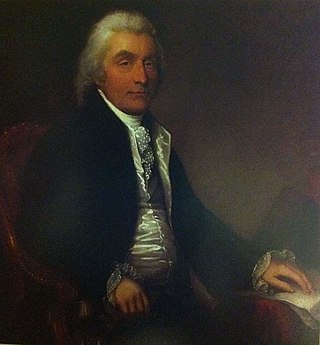
Sir John Wentworth, 1st Baronet was the British colonial governor of New Hampshire at the time of the American Revolution. He was later also Lieutenant-Governor of Nova Scotia. He is buried in the crypt of St. Paul's Church in Halifax.

Hurricane Juan was a significant tropical cyclone which caused extensive damage to parts of Atlantic Canada, being the tenth named storm and the sixth hurricane of the 2003 Atlantic hurricane season. Juan formed southeast of Bermuda on September 24 from a tropical wave that had tracked across the subtropical Atlantic Ocean. It tracked northward and strengthened over the warm waters of the Gulf Stream, reaching Category 2 strength on the Saffir-Simpson hurricane scale on September 27. The hurricane peaked in intensity with sustained winds of 105 mph (169 km/h) that same day, losing some strength as it raced over cooler waters toward the coast of Nova Scotia, before making landfall between Shad Bay and Prospect in the Halifax Regional Municipality early on September 29 as a Category 2 hurricane with winds of 100 mph (160 km/h). Juan retained hurricane strength while travelling through Nova Scotia, though it would weaken into a Category 1 hurricane over Prince Edward Island. Juan would eventually be absorbed by another extratropical low on September 29 near Anticosti Island in the northern Gulf of Saint Lawrence.
Hammonds Plains is a suburban area of the Halifax Regional Municipality in Nova Scotia, Canada, located 20 km northwest of Downtown Halifax.

Bedford is a former town and now a district of Halifax, Nova Scotia, Canada. It is situated on the north west shore of the Bedford Basin in the central area of the municipality. It borders the neighbouring communities of Hammonds Plains to the west, Sackville to the north, Dartmouth to the east, and mainland Halifax to the south. Bedford was named in honour of John Russell, 4th Duke of Bedford, Secretary of State for the colonies in 1749.
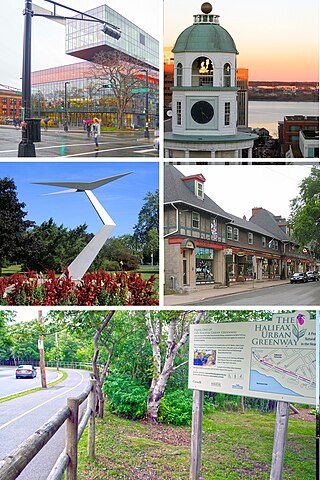
The Halifax Peninsula is a peninsula within the urban area of the Municipality of Halifax, Nova Scotia.

Lower Sackville is a suburban community of the Halifax Regional Municipality, Nova Scotia, Canada.
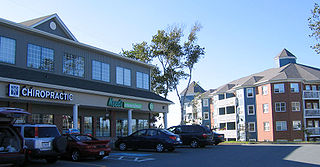
Clayton Park is a community within Halifax, Nova Scotia, Canada.
Rockingham is a community located within the urban area of the Halifax Regional Municipality, in Nova Scotia, Canada.
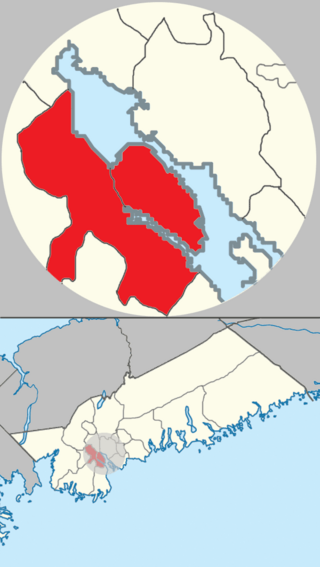
The community of Halifax, Nova Scotia was created on 1 April 1996, when the City of Dartmouth, the City of Halifax, the Town of Bedford, and the County of Halifax amalgamated and formed the Halifax Regional Municipality. The former City of Halifax was dissolved, and transformed into the Community of Halifax within the municipality.

Burnside is a Canadian urban neighbourhood located along the northeast shore of Bedford Basin of the Halifax Regional Municipality in Dartmouth, Nova Scotia.

Government House of Nova Scotia is the official residence of the lieutenant governor of Nova Scotia, and is located in Halifax. It stands in the provincial capital at 1451 Barrington Street; unlike other provincial Government Houses in Canada, this gives Nova Scotia's vice-regal residence a prominent urban setting, though it is still surrounded by gardens.

The Bedford Highway is a highway in the Halifax Regional Municipality, Nova Scotia that is part of Trunk 2. It runs around the western side of the Bedford Basin. The highway starts at the Windsor Street intersection on the Halifax Peninsula and passes by the communities of Fairview, Rockingham, and Bedford, where it becomes part of Trunk 1 to Highway 101.
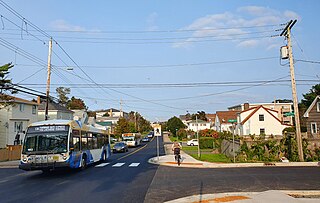
Fairview is a community within the urban area of Halifax in Nova Scotia, Canada.

By the arrangements of the Canadian federation, the Canadian monarchy operates in Nova Scotia as the core of the province's Westminster-style parliamentary democracy. As such, the Crown within Nova Scotia's jurisdiction is referred to as the Crown in Right of Nova Scotia, His Majesty in Right of Nova Scotia, or the King in Right of Nova Scotia. The Constitution Act, 1867, however, leaves many royal duties in the province specifically assigned to the sovereign's viceroy, the lieutenant governor of Nova Scotia, whose direct participation in governance is limited by the conventional stipulations of constitutional monarchy.

Joseph Scott was a soldier, merchant, government office holder, and political figure in Nova Scotia. He was a member of the 2nd Nova Scotia House of Assembly from 1759 to 1760. He built the Scott Manor House.
Beechwood Park is a neighbourhood within the urban area of Municipality of Halifax, Nova Scotia, Canada.

This timeline of the history of the Halifax Regional Municipality documents all events that had happened in Halifax, Nova Scotia, Canada, including historical events in the former city of Dartmouth, the Town of Bedford and Halifax County. Events date back to the early 18th century and continue until the present in chronological order.

The Royal Nova Scotia Regiment was a battalion of infantry raised in 1793 to defend British interests in the colony of Nova Scotia during the Wars of the French Revolution. The unit was commanded by Colonel John Wentworth, the lieutenant-governor of the colony, throughout its existence. The Royal Nova Scotia Regiment (RNSR) had an undistinguished history through most of its existence, and saw very limited action, mostly in the role of marines, but did play an important role in the defense of Nova Scotia during these wars.

Madame Alphonsine-Thérèse-Bernardine-Julie de Montgenêt de Saint-Laurent was the wife of Baron de Fortisson, a colonel in the French service, and the mistress of Prince Edward, Duke of Kent and Strathearn.



















